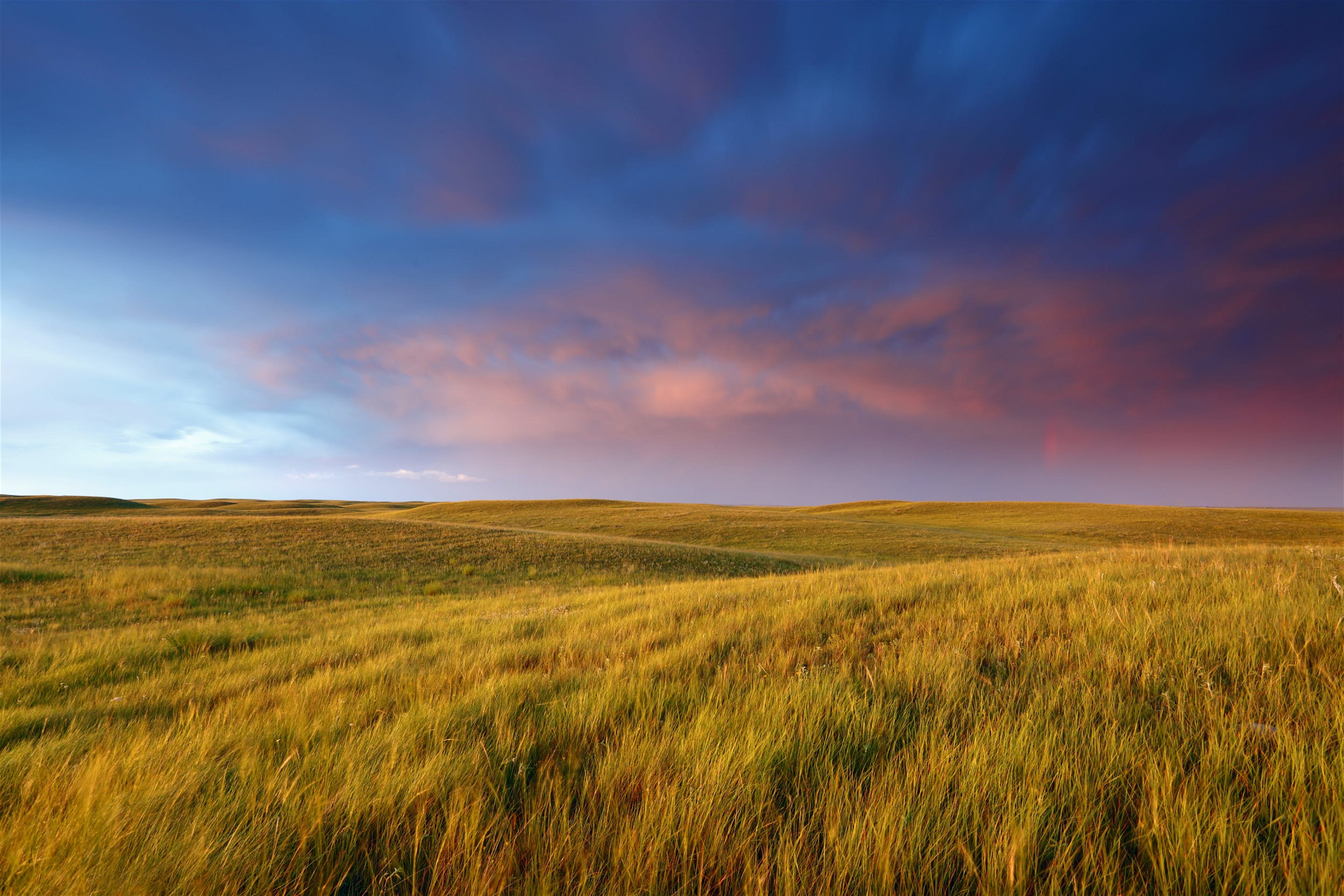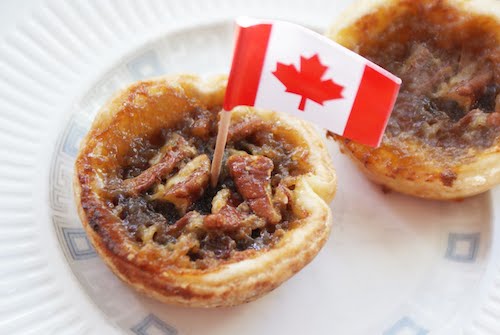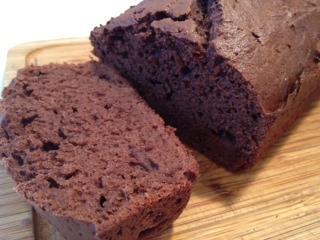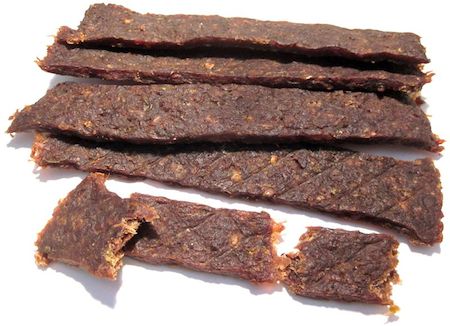
People on the Prairies tend to talk a lot about how cold it is out, and because it can often dip below -40 on any given winter day, I’d say they have the right to. But when someone asks me now what I think of the Saskatchewan / Manitoba region, I look back on living there for 18 years and I can’t help but think it was warm.
No, I’m not talking about outside. Unless you’ve lived in a place where the wind-chill was a common problem and you’ve never experienced what it feels like for your calves to freeze to your jeans, you don’t know cold. I’m talking about the people – they were warm, friendly, and very welcoming. I also think ‘warm’ when I think about my Grandma’s kitchen and everything we baked together on those cold winter days.
When I started digging for authentic Saskatchewan recipes in my Grandma’s recipe box, a lot of memories came flooding back. I’ll admit to asking myself a few times, “Did I really eat that?” in relation to some unique meat items, but I managed to surprise myself with a few things that I had completely forgotten and that I’d really like to try out on my own family.
This month on Shelly’s Friday Favourites we’re focusing on Canadian Cuisine, and this week we’re digging up recipes from the Prairies. Here are a few of Grandma’s recipes that are uniquely central Canadian cuisine.
Butter Tarts, Saskatchewan style
It’s a good thing I don’t make these very often, because they are so addictive. The sweet, gooey filling will have you going back from more, and they are perfect for your Christmas goodie table.
Ingredients:
Pastry:
2 2/3 cups all purpose flour
2 tablespoons sugar
½ teaspoon salt
2/3 cup cold unsalted butter chopped up
6 tablespoons cold vegetable shortening cut up (I just use more butter, but either works)
8 tablespoons ice water
Filling:
2 eggs
1 cup brown sugar
1/4 cup maple syrup
1 tablespoon melted butter
2 teaspoons lemon juice
1 teaspoon vanilla
1/8 teaspoon salt
Directions:
1. Sift the flour and salt into a bowl. Cut in the butter and shortening to make pea-size pieces. Add ice water until dough holds together and form into a ball. Wrap with plastic wrap and refrigerate for at least 15 minutes.
2. Roll on a lightly floured surface to about 1/8″ thick. Cut the shells using a round cookie cutter. They should fit into a muffin tin. You should have about 12 medium shells. Put these shells into a greased muffin pan like the Wilton Excelle Elite Muffin Pan.
3. Preheat oven to 400 degrees F.
Beat all ingredients for the filling together until full of bubbles. You can add walnuts at this point if you’d like them.
Spoon into pastry-lined tins and bake for 20 minutes.
 Saskatchewan Chocolate Spice Bread
Saskatchewan Chocolate Spice Bread
My Grandfather was a farmer, and because he had 4 quarters of crops that included wheat and barley, we were all about the grains growing up. This recipe from Food.com showcases traditional Saskatchewan grains.
Ingredients
- 5 tablespoons unsalted butter, melted, plus more for greasing the pan
- 1 1/2 cups flour ( spoon flour into a dry-measure cup and level off)
- 1/3 cup cocoa powder, sifted after measuring ( Dutch-process or alkalized)
- 1 teaspoon baking powder
- 1/2 teaspoon salt
- 1/2 teaspoon ground cinnamon
- 1/2 teaspoon freshly grated nutmeg
- 1/2 teaspoon ground ginger
- 2 large eggs
- 1/2 cup sugar
- 1/3 cup packed dark brown sugar
- 2/3 cup sour cream ( low-fat sour or regular )
Directions
- Lightly grease loaf pan with a little unsalted butter, then line the bottom of the pan with parchment or wax paper cut to fit; butter the paper as well.
- Position a rack in the middle level of the oven; preheat to 350°F.
- Combine the flour, cocoa, baking powder, salt and spices in a bowl or on a large piece of parchment or wax paper.
- Whisk the eggs in a large bowl to break them up, then whisk in both sugars.
- Whisk for a minute, or until the mixture lightens, then whisk in the 5 tablespoons of butter and the sour cream.
- Add the flour mixture to the egg mixture all at once; gently whisk until smooth.
- Scrape the batter into the prepared pan and smooth out the top, pushing the batter evenly into the corners.
Pemmican
Ok, I’ll admit I don’t plan on actually serving this to my kids, and if I ate it when I was a kid I can’t remember it very well. This is a traditional Saskatchewan energy snack, but the interesting thing about Pemmican is that it’s now talked about as a ‘super food’ and is one of the things people who follow the Paleo diet eat.
For best results, you’ll need a meat grinder like the Cuisinart Meat Grinder.
- Dry the meat. You should choose a sunny day to dry your meat. You can use any type of meat, but most prefer lean, large chunks. Place on a drying rack or use a dehydrator like the Total Chef Food Dehydrator.
- Grind the meat with your meat grinder.
- Render the fat. If you’re unsure as how to do that, here’s a helpful link.
- Combine meat and fat, in a ratio of about two parts meat to one part fat.
- Pack in airtight containers
- Store in a cool, dry, dark place.
There are so many amazing recipes from the Prairies, and they all bring back happy memories of time with family and friends. If you have your own Prairie recipe, be sure to share in the comments below.









Hi, my name is Rick, I am looking for a recipe for cooking ( white or slightly brown ) beans I had regularly in a Francophone community ( Debden ) Saskatchewan in the early seventies. I have tried many through the years and come close but not as good. Only clues I have are French Canadian family, beans were white after cooking and were delicious even as a snack before supper. Any input would be welcome. Thankyou.
Comments are closed.